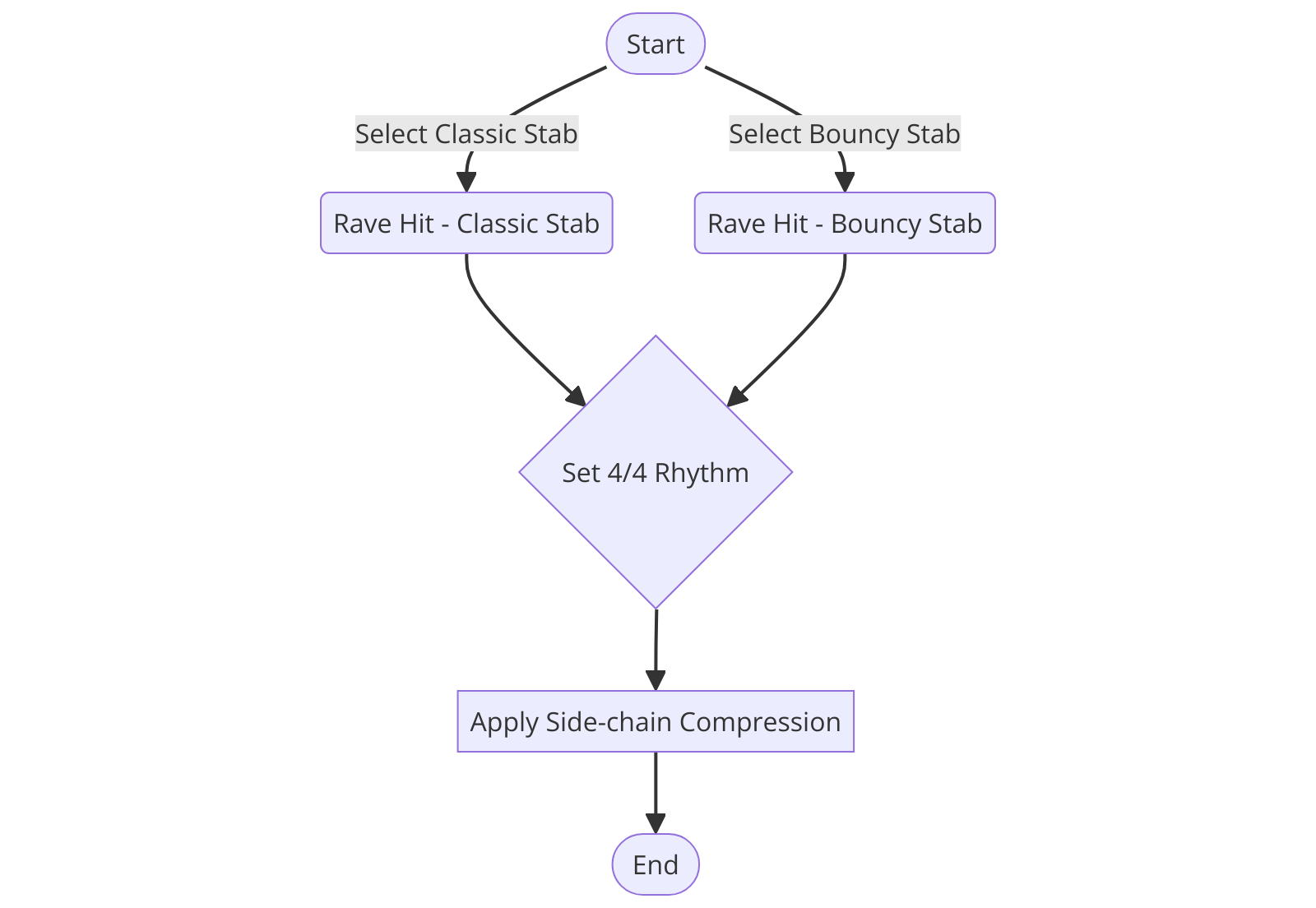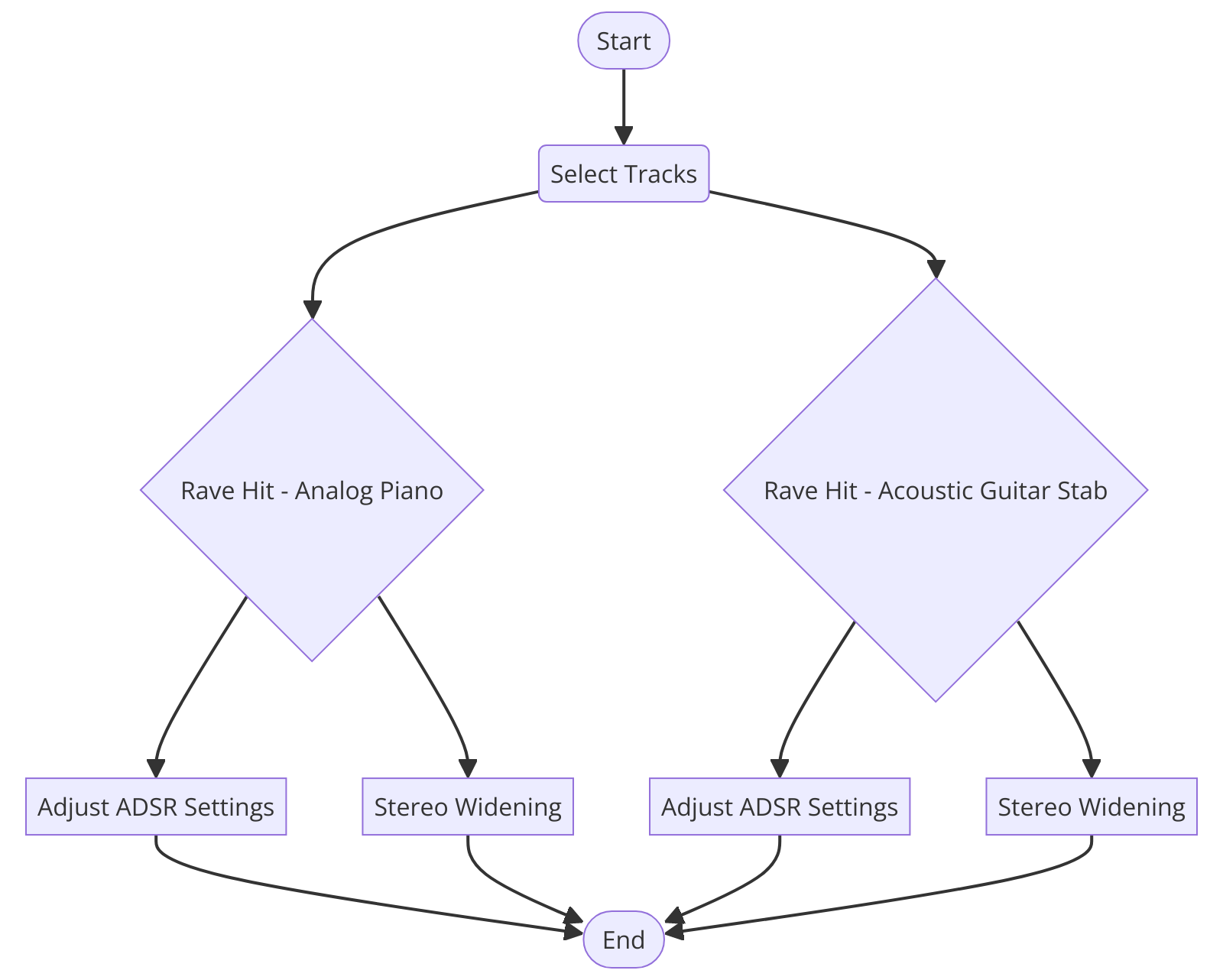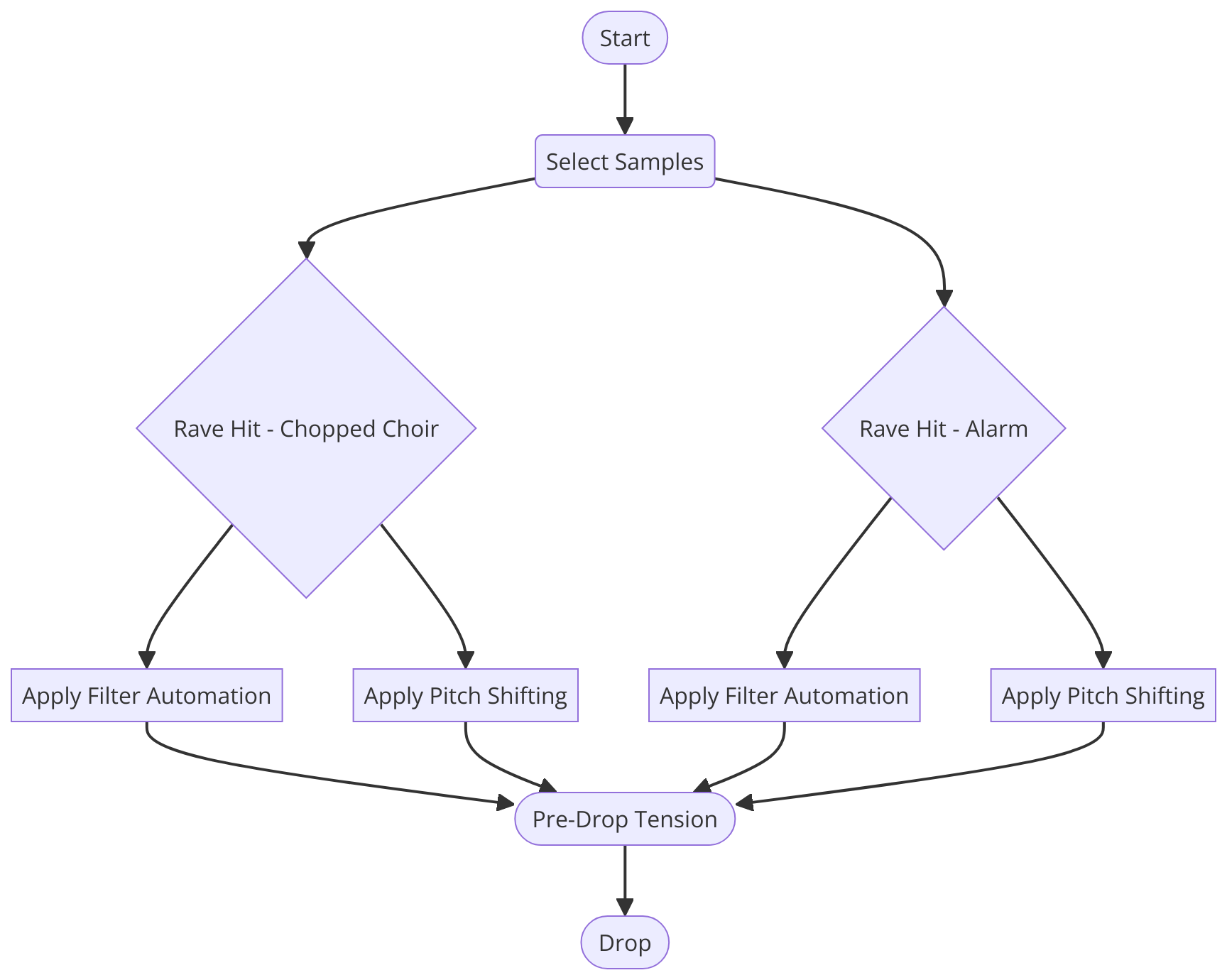Anatomy of a Rave Track: The Rave Hits Sample Pack
Make a Rave Anthem with loops and samples. Our guide shows you how to mix, layer, and launch the perfect rave track with our "Rave Hits Sample Pack".

This week we look at "Rave Hits" – a carefully selected collection that connects the vibrant spirit of '90s rave culture. We show you how to blend elements from "Rave Hits" into your music. It's a straightforward guide to the essence of rave music, using quality samples and insights.

Anatomy of a Rave Track
Look at the layered essence of a rave track. It's straight forward and simple. And yes, this can be applied to our "Rave Hits" collection.
Laying the Foundation: The Kick and Bass
- Select Your Samples: Begin with choosing robust 'Rave Hit' samples that resonate with your artistic vision. A 'Classic Stab' can give you that punchy, clear kick, while a 'Bouncy Stab' might offer a bassline with the groove that gets toes tapping.
- Set the Rhythm: Establish a steady 4/4 rhythm that will serve as the scaffolding for your entire track. This consistent beat is the pulse that rave-goers will feel in their chest, driving the movement and energy of the dance floor.
- Apply Side-Chain Compression: By ducking the bassline whenever your kick hits, you create room in the mix, allowing each element to breathe. This technique not only cleans up your track but also adds that quintessential 'pump' that defines rave music.

The Foundation: Grab "Rave Hit - Classic Stab." Pair it with "Rave Hit - Bouncy Stab" for that deep, moving bass that feels like it's reviving the '90s rave scene with a modern twist.
- Kick Dynamics: Slot "Rave Hit - Classic Stab" into your DAW (Digital Audio Workstation) and set a 4/4 pattern. Aim for -8 dB on your mixer to keep the mix clean for other elements.
- Bassline Craft: Layer "Rave Hit - Bouncy Stab" beneath the kick. Use side-chain compression linked to the kick to create that pulsing vibe essential in rave music.

Synths and Strings
Dive into the melody with "Rave Hit - Analog Piano" and "Rave Hit - Acoustic Guitar Stab." We're painting with sound here, blending synthetic brilliance with acoustic warmth.
- Lead Melody Tips: Dial in "Rave Hit - Analog Piano" as your melody's spearhead. Tweak your synth's ADSR (Attack, Decay, Sustain, Release) settings for an attack around 5 ms and a decay about 600 ms, keeping the energy alive and kicking.
- Harmonic Layers: Underpin the lead with "Rave Hit - Acoustic Guitar Stab." A bit of stereo widening can make this layer hug the track without stepping on your lead's toes.

Melodic Elements and Atmospheric Pads
With the foundation in place, it's time to add layers that will bring your track to life:
- Introduce Melodic Elements: Layer melodies using samples like the 'Analog Piano' for warmth and 'Acoustic Guitar Stabs' for a touch of organic texture. These elements are the soul of your track, weaving emotional narratives that listeners can connect with.
- Sculpt Your Sound: use sound design by tweaking ADSR (Attack, Decay, Sustain, Release) settings for each melodic element. This shapes how each note responds and evolves over time, conveying emotion and adding drama to your track.
- Create space: Apply stereo widening to give your melodies a sense of space. This not only makes your track more immersive but also gives each element a distinct place in the mix, ensuring clarity and impact.
Atmospheric Ambience: Pads and Transitions
"Euphoria" is the word with "Rave Hit - Chopped Choir." And for that heart-racing buildup? "Rave Hit - Alarm" is your go-to.
- Pad Technique: Stretch "Rave Hit - Chopped Choir" across your arrangement for those hair-raising moments. Automate a high-pass filter to unveil the sound gradually, perfect for intros or breakdowns.
- Building Tension: For transitions, pitch down "Rave Hit - Alarm" by 12 semitones and automate a low-pass filter to sweep up towards the drop, creating an irresistible pull.

You need to build anticipation:
- Select Tension-Driving Samples: 'Chopped Choir' and 'Alarm' samples are perfect for dialing up the suspense. These sounds are your tools for foreshadowing the energy that's about to be unleashed.
- Manipulate with Mastery: Use filter automation to slowly introduce new frequencies, and pitch shifting to create a rising effect. This gradually increases the intensity, making your audience yearn for the release.
The Drop: Breakdowns and Peaks
Now, for that moment everyone waits for—the drop. "Rave Hit - Accepting" and "Rave Hit - Blurred Piano" will get hands in the air.
- Pre-Drop Suspense: Slow down "Rave Hit - Accepting" to half speed for a gripping breakdown. Add some reverb to blend it into the ether.
- The Drop Itself: Let "Rave Hit - Blurred Piano" lead the charge into the drop. A sweeping high-pass filter just before the drop clears the way for maximum impact when you let everything loose.
This defines a rave track:
- Pre-Drop Buildup: Utilize filter sweeps, tempo changes, and effect intensifications to set the stage. Each element should add to the escalating excitement, culminating in a moment of collective anticipation.
- Execute the Drop: When the tension can no longer be contained, unleash 'The Drop'. This is where your track explodes with full force, delivering the payoff that the entire build-up promised.
Mixdown and Mastering: The Final Polish
Balancing the mix is key. Ensure the kick and bass are front and center, using EQ to clean up any muddiness. Compression is your friend, but don't squash the life out of your track.
Mastering is about clarity, loudness, and width. Aim for a final master that's loud enough to compete but retains dynamic range. A limiter can help boost the overall level without introducing clipping.
Final Touches: Mixing and Mastering
Once you've laid down all the elements of your track, it's crucial to fine-tune:
- Mixing: Balance levels, pan elements for width, and apply EQ to carve out a space for each part of your track. This is where you ensure everything works in harmony.
- Mastering: Apply the final polish. Adjust compression, limiters, and maximizers to ensure your track is loud and clear, ready to rival the energy of any rave setting.
Final Words
"Rave Hits" by Sample Focus isn't just a sample pack is a set of building blocks to help you create a Rave Anthem. With these technical tips, each track you produce pays homage to rave culture but also carves out your signature sound.







